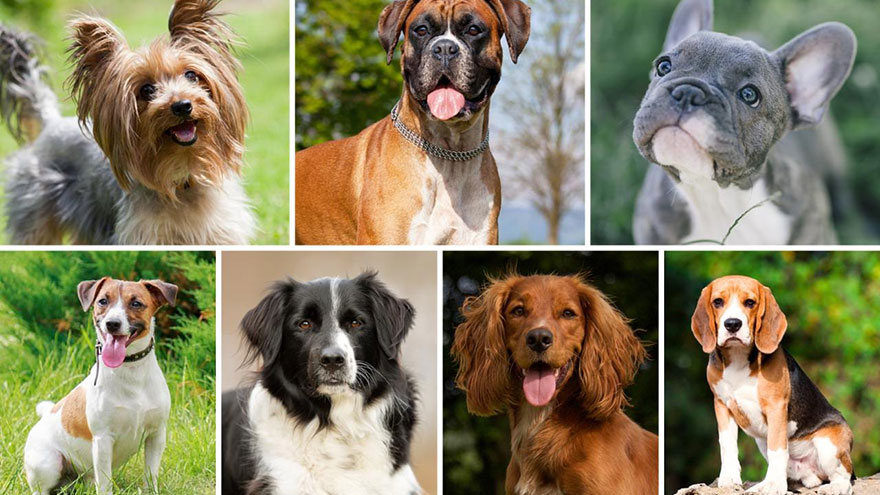How to Measure for Dog Breed Standards
Accurately measuring your dog can determine whether your dog complies to breed standards. To compete in shows and offer your dog for stud breeding, he must meet the standards officially set for the breed, including proportion, position, behavior and height.
Some of these standards are subjective, and most of them vary greatly by breed. Before breeding and at shows, purchasers of stud rights and judges reserve the right to measure and evaluate the animal, so it is imperative to take accurate measurements and record them with your local kennel club and the American Kennel Club (AKC).
Things You’ll Need
- Second helper
- Wicket or two yardsticks

Measure and Record Height
1. Position your dog in a still, standing position looking forward on a flat and level surface.
According to Norwegian Elkhound breeder Susan Hamilton, use a grooming table, if possible, for accuracy. Ask your helper to pet your dog to keep her in a stable position. If necessary, your helper may have to gently restrain him.
2. Position your dog’s feet in the appropriate position for her breed.
3. Place the U-shaped wicket over the shoulders of the dog, if you are measuring with a wicket.
Read the measurement on the wicket at the highest point and record the measurement using pen and paper.
4. Measure your dog using two yardsticks if you do not have a wicket.
Rest one yardstick flat against the dog’s shoulder. Intersect this stick with a vertically placed yardstick. Record your measurement at the intersection of the yardsticks.
5. Compare your dog’s measurements with the breed standard by researching the standards on the AKC site.
Measure Additional Standards
1. Assess your dog’s behavior with strangers.
A dog that demonstrates extreme nervousness or snappy behavior usually receives an instant disqualification at dog shows. You can help your dog by allowing new visitors to inspect him if the dog has previously shown no signs of aggression. She should remain comfortable while strangers lift her and touch areas of concern, such as lips and teeth, hips, paws, and tail.
2. Examine your dog’s proportions and compare them to the AKC breed standard.
Some proportions are subjective, but the AKC clearly outlines proportions on most dogs breeds, such as coloring, markings and placement of facial features.
3. Compare your dog’s coat texture with the breed standard.
Depending on the breed, dog coats may need to be thick, shiny and able to be clipped for show in some cases. If the texture of your dog’s coat is not up to standard, consult your veterinarian. Coat dullness is often correctable through slight dietary changes.
4. Check your dog’s teeth.
Show dogs must have all their teeth. They should be straight and in most breeds there should be no overbite or underbite. Teeth should also appear white—to accomplish this, practice dental care with your dog.
5. Study and replicate additional tasks required for your dog’s breed.
Some breeds are judged heavily on quirky attributes. For example, German Shepherds must form and maintain a specific stance while being judged.
Tips and Warnings
- If you require help in measuring your dog, keep in mind that at a show, the judge must be able to measure and handle the dog without an issue.
- Per AKC standards, measure to the half inch increment.
- Male and female dogs qualify for breed standards under different measurements.
- The withers measurement refers to the highest point of the animal’s shoulder.
- Judges handle some toy breeds by picking them up at the neck and tail. This is a humane practice when done properly. Ensure that your dog is comfortable with this behavior.
- You can also consult with your dog groomer for tips on achieving a coat to match breed standard.
- Some dog breeds do not require height standards but do have other metrics to consider, such as number of teeth or weight. In these instances, more consideration is placed upon these traits.
- Measuring height without a wicket will likely result in an inaccurate measurement, but will serve as an approximation.
- Always exercise caution when having others approach or examine your dog. Ensure that the dog is comfortable with you sticking your hands around her mouth, paws and body.
You Might Also Like :: Male Vs. Female German Shepherd Dogs

